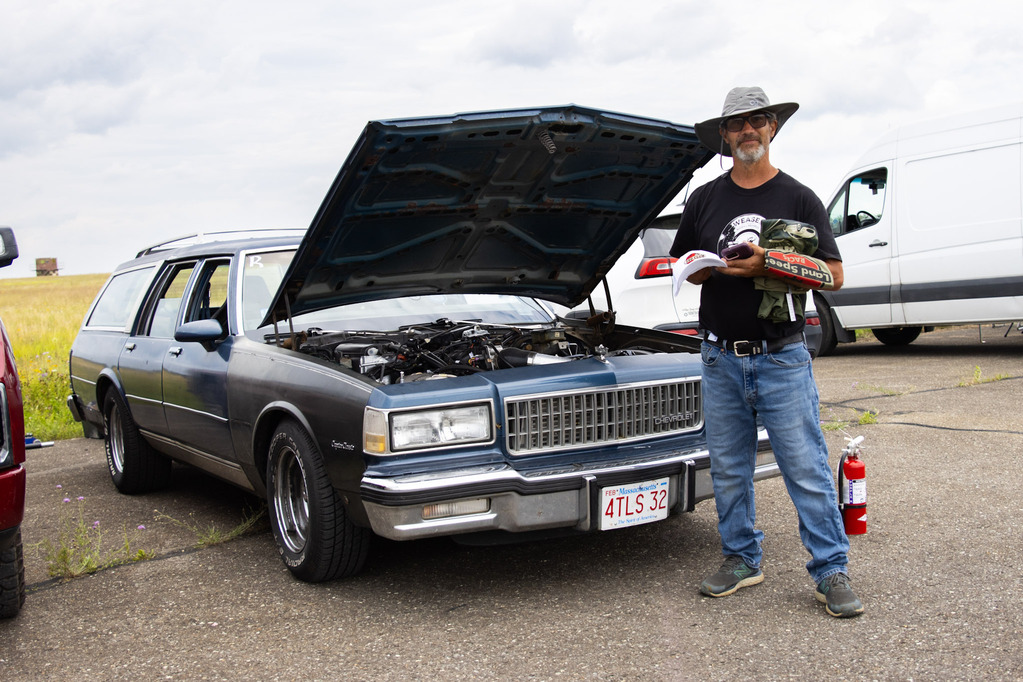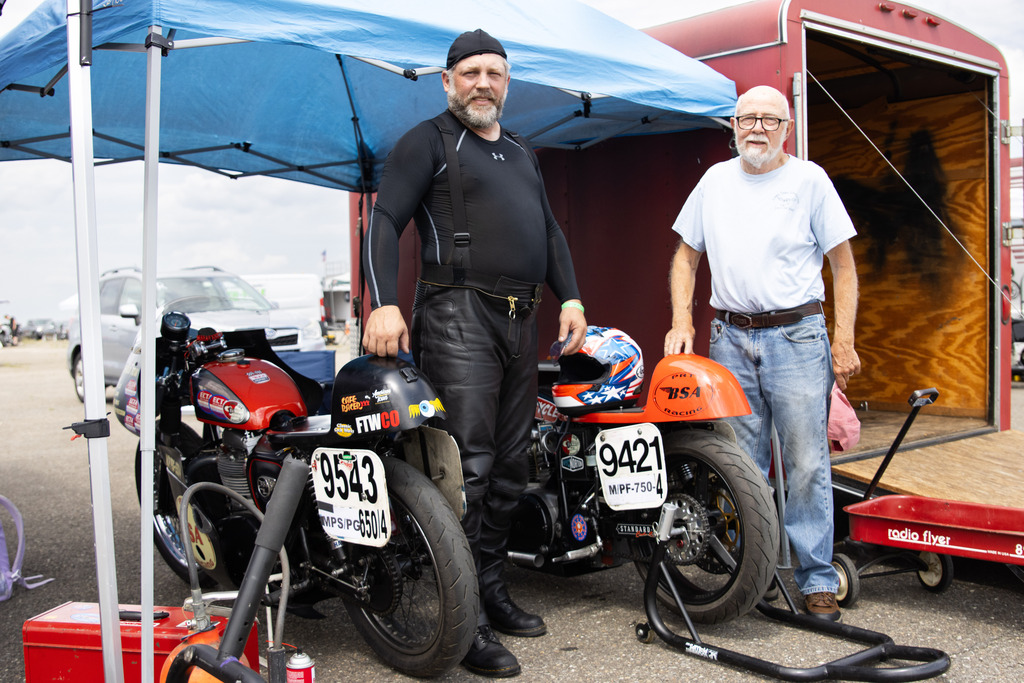
Ray Cloutier drove 400 miles from Massachusetts to the former Loring Air Force Base to chase a high. His vessel? A four-decade-old station wagon.
A long-time bicycle racer, he loved the speed of flying downhill, and the adrenaline rush that followed.
So after working on his Chevrolet Caprice Classic Wagon for eight years, he decided it was time to see just how fast it could go.

The answer was north of 150 mph. Cloutier practically floated through the pits as he announced himself as the newest member of the Loring Timing Association’s “150 MPH Club” Thursday.
“It’s addictive. It’s scary in a good way,” Cloutier said.
That’s the feeling all of the land speed racers who make the trek to the organization’s annual “Maine Event” are there for.
“Every person has that different speed that just gives you an adrenaline rush that you can’t really replace with anything else,” LTA public relations coordinator Kristina Newton said. “For some people it’s 80 miles per hour, for some, it’s 300.”
Loring is uniquely positioned to offer that dichotomy. It’s the longest concrete-asphalt land speed track in the world, allowing racers to push their limits down 1.5 miles of runway.
And the vehicles those racers drive come in all forms. Station wagons, yes. But also retired NASCAR Cup cars, supercars, hot rods, a 25-foot-long sidecar streamliner electric motorcycle.
Combined, there are close to 20 categories of vehicles between cars and motorcycles, and dozens of classes within those. Racers who hit 150, 175 or 200 mph earn membership into illustrious milestone clubs, which comes with a hat bearing their accomplishment. “The most expensive hat in the world,” Newton called it.
That’s what racers are chasing. An adrenaline high, a breakthrough, nudging class records higher. The most ambitious eye the track’s all-time speed record: 311 mph set by Bill Warner, a motorcycle racer from Florida, on a custom-built Suzuki Hayabusa in 2011.
It’s still the land speed world record over 1.5 miles. He died in a crash at Loring two years later while attempting to break the 300 mph barrier over one mile. At the track’s start line, a street sign bearing “Bill Warner Blvd” stands in his honor.

Such a speed is well beyond the reach of Don Phillips, from the Adirondack region of New York. He built his 1934 Ford Three-Window Coupe to be a show car.
It’s won around 118 trophies at car shows, Phillips said. But now he’s racing it.
This year, his third at the event, he was determined to drive lighter. So off came the front fender and out came the air conditioning, and Phillips joined the 150 MPH Club over two kilometers. He reached his goal, but the itch to go faster is pulling him back.
“Will [I] come back? Yes and no,” Phillips said.” How do I feel? Let me go home first and ask me after a month, I’ll probably say, ‘Yeah.’”

Tom Pease, from the Bronx, drives what he calls the “Chevomet,” a Frankensteinian combination of a Chevrolet engine in the body of a Mercury Comet. In his words, the Chevomet is a “full blown race car.” He’s looking to reach 200 mph, but the car’s horsepower wasn’t quite enough to get it there Thursday.
“I’m here for speed,” Pease said. “And you can do it safely, trying to go 200 miles an hour. You’re not doing that on a highway, becoming a menace and taking somebody else’s life into your hands. Here it’s you against the track.”
It’s an addiction. A sport that can feel so rewarding one day and futile the next. Engines blow, transmissions fail and the smoke rising from under the hood practically spells out, “better luck next year.”
But they keep coming back. Rick Bryan and his team, driving a former NASCAR, didn’t like the way the car was running during the first day of the event Wednesday, so they drove five hours back to Saco that night and returned Thursday to set two new class records.

“They’re trying to push and push and push and make it just a little bit faster each time,” Newton said. “Tweak this here. Tweak that there. Just pushing each individual machine as hard as it can go.”
“It takes a certain kind of person to keep coming back and trying to roll a boulder up a hill, so to speak,” said Tom Schaeffer, captain of PRT Racing and owner of two 1966 BSA Motorcycles that hit the track during the event.
That’s land speed racing, where for a week each summer, the sport’s enthusiasts turn their attention to northern Maine — both for its vast runway and the community it inspires.
“It’s the thrill of the racing that gets people hooked, but it’s the community aspect that I think keeps bringing people back specifically to this event,” Newton said. “They keep coming back because of the people.”
The event is open to spectators and runs through July 19.







